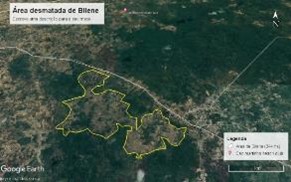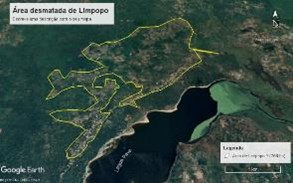
GAZA PROVINCE: Macuane and Chissano Administrative Posts


Fieldwork activities were carried out in the province of Gaza, Administrative Posts of Macuane (Bilene District) and Chissano (Limpopo District), between the 10th and 14th of June 2022. In Macuane, The locations were previously identified and selected, based on existing signs of biodiversity loss caused by deforestation (through the Global Forest Watch).
Objectives of the field work
To test the methodology to be applied in the FARSYMABI Project, for collecting data on land use and farming systems, as well as inventory techniques for biodiversity indicators (birds and vegetation), specifically:
- Test the suitability of the interview script to identify the main sources of subsistence and the main farming systems practiced by households, and identify households' perceptions of the importance of biodiversity conservation and integrating it into agriculture.
- Map the diversity of flora and birds existing in the visited communities, to test the use of the diversity and composition of bird communities as an ecological indicator; and explore the diversity of existing flora and its most common uses in the community.

Methodology
Methodology
The activities were carried out in three parts: 1) interviews with the community leader and/or existing local structure; 2) interviews with households in different land uses: i) areas of native forests; ii) recently opened (less than 3 years old)
agricultural areas; and, iii) agricultural areas
in use for more than 10 years; and, 3) identification and listing of existing flora and birds.
12 households were interviewed: 7 in Macuane and 5 in Chissano administrative posts.

Preliminary Results
From the household's interviews:
- Agriculture is the main source of subsistence (mostly for consumption), followed by charcoal production (predominant in Macuane) and firewood cutting (predominant in Chissano) for income generation.
- Communities recognized the scarcity of forest resources species with high calorific value and a decrease in land productivity, due to intensive use.
- Fallow
was identified as an alternative to restore productivity. For
biodiversity conservation measures such as reduction of fires, the
selection of older plants to produce charcoal and firewood were
mentioned.
- Biodiversity indicators perceived as important for the sustainability/maintenance of agricultural productivity are: trees, shrubs, grasses, planting fruit trees that attract birds, raising cattle. These are considered to improve soil quality through the incorporation of plant material and manure in the soil during plowing.
- Human-wildlife conflict was mentioned, referring specifically to Monkeys.
Regarding birds observation:
- Methodologically, the results revealed the importance of considering richness and diversity of terrestrial species alone to focus the study on the effect of deforestation and avoid the confounding effects of other habitat differences across study areas.
- Regarding the composition of bird communities by habitat guilds, we observed that Maguaza (in Chissano) had a striking minimum share of forest and dense woodland species (15%), the maximum proportions of birds of woodland and savannah (66%), as well as those of open and semi-open habitats (19%), which may reflect the highest level of deforestation in Maguaza.
- Species richness was the highest in natural forest and recent crop field immersed in the forest matrix; it declines gradually to the partially deforested parcel with scrubs, and reaches a minimum in old crop fields.
- The proportion of forest and dense woodland species is maximum (70%) in natural coastal forest, gradually declines to 10% in the deforested/savannized state, where woodland and savannah species represent 90% of all recorded individuals; it rises again to an intermediate level, similar to the young crop field immersed in the forest matrix, where forest and savannah species have more balanced proportions.
- Functional diversity peaks in stages 2 (young crop field immersed in a forest matrix) and 4 (older crop fields with forest fragments within the agricultural matrix), as these are the stages with more balanced proportions of forest and savannah species.